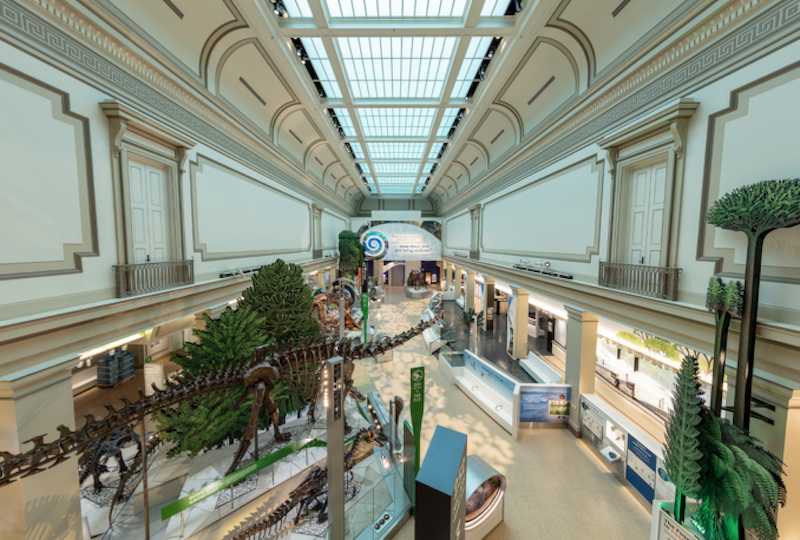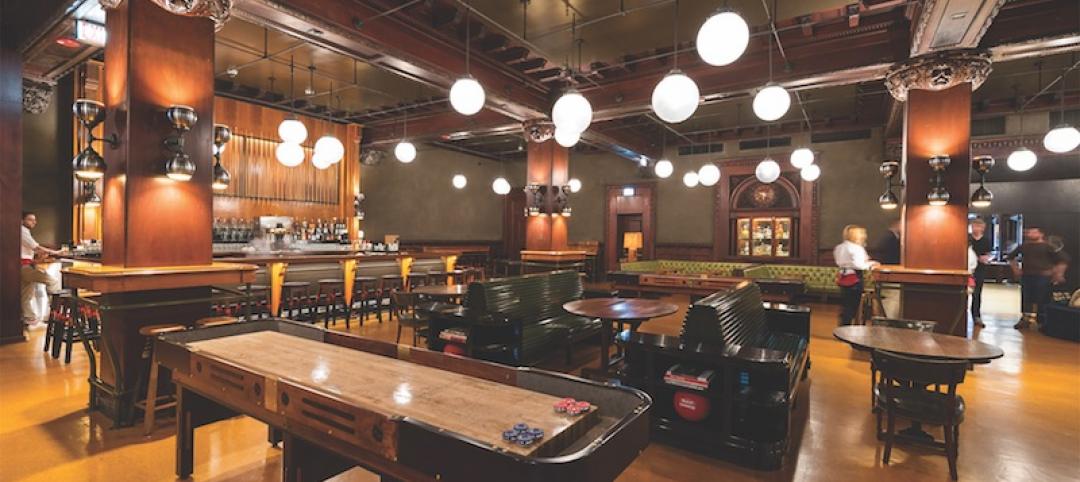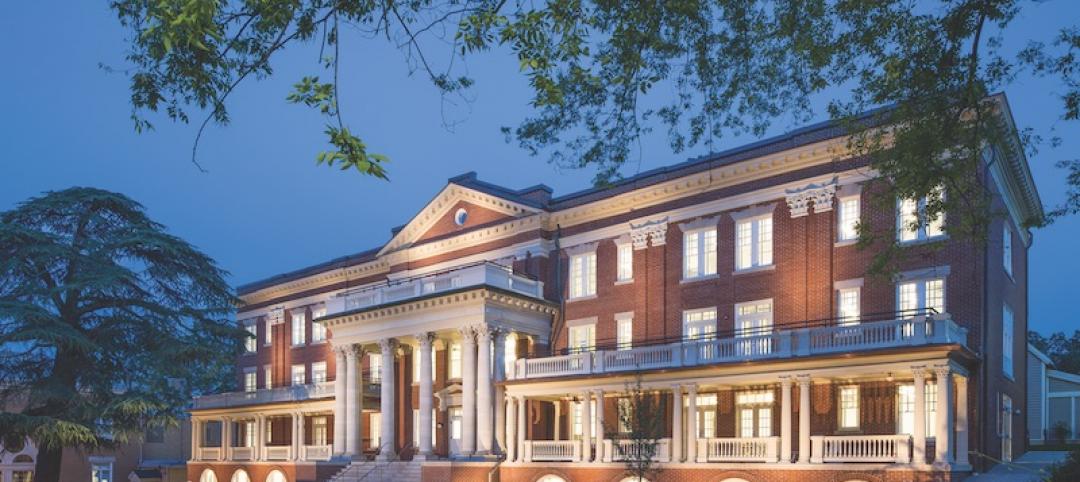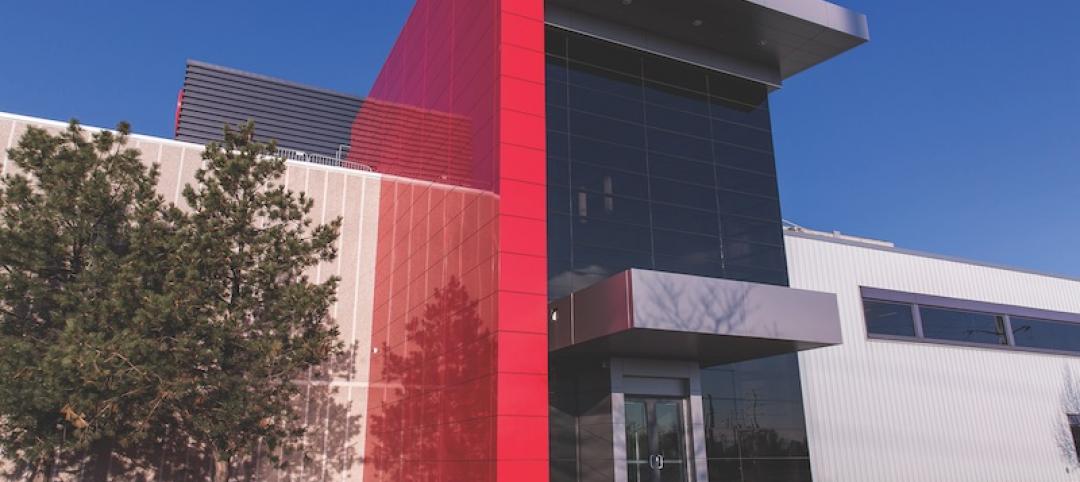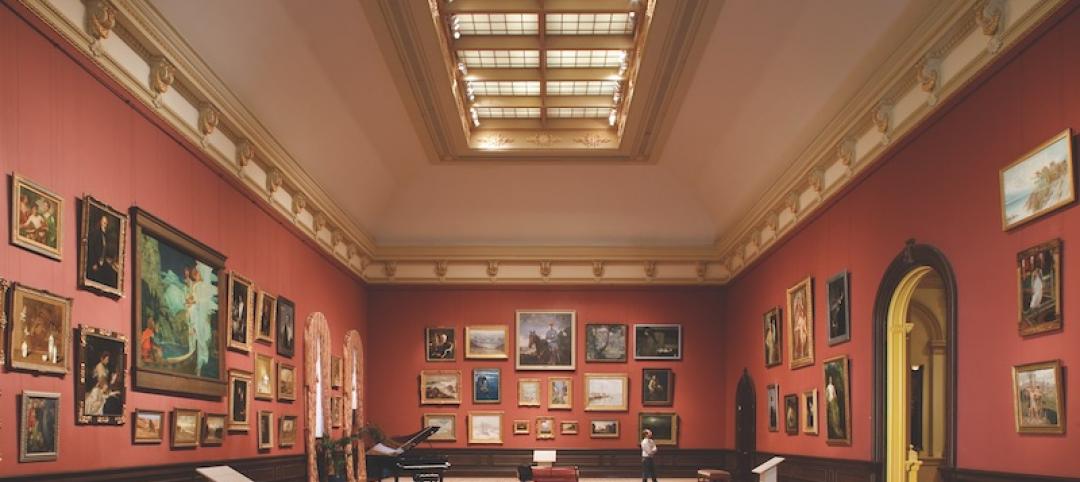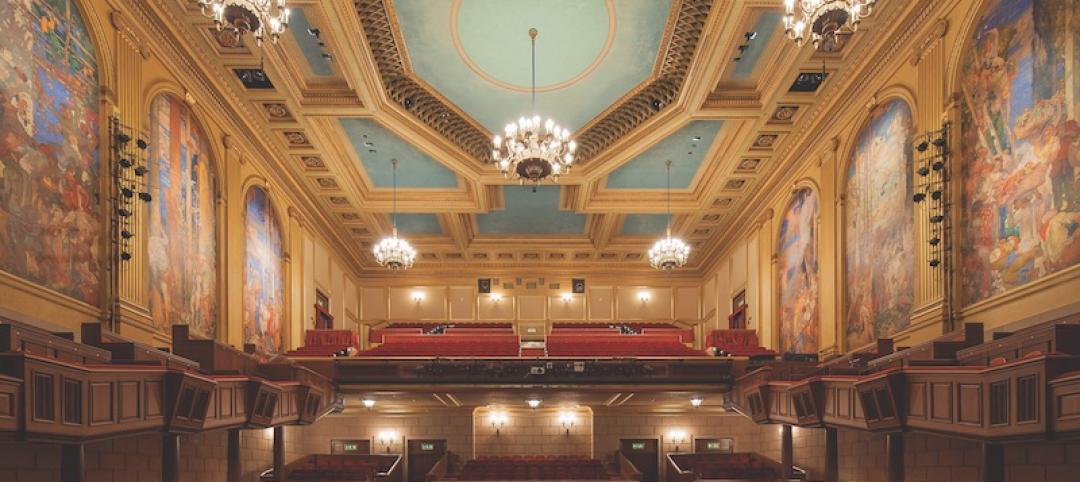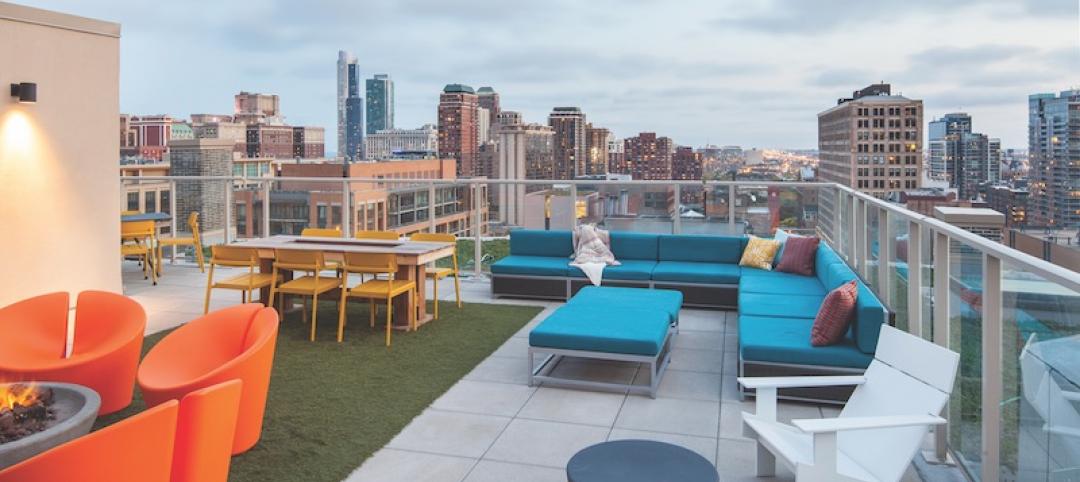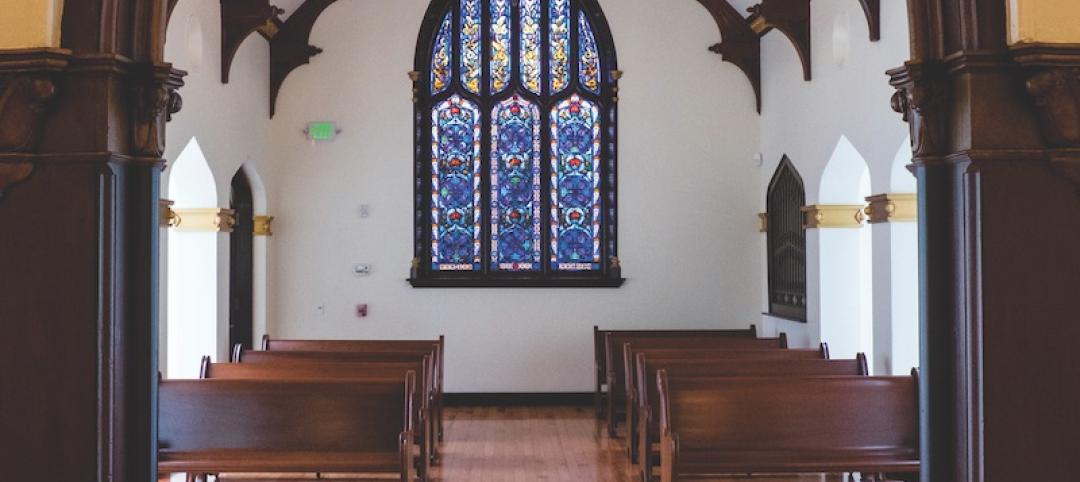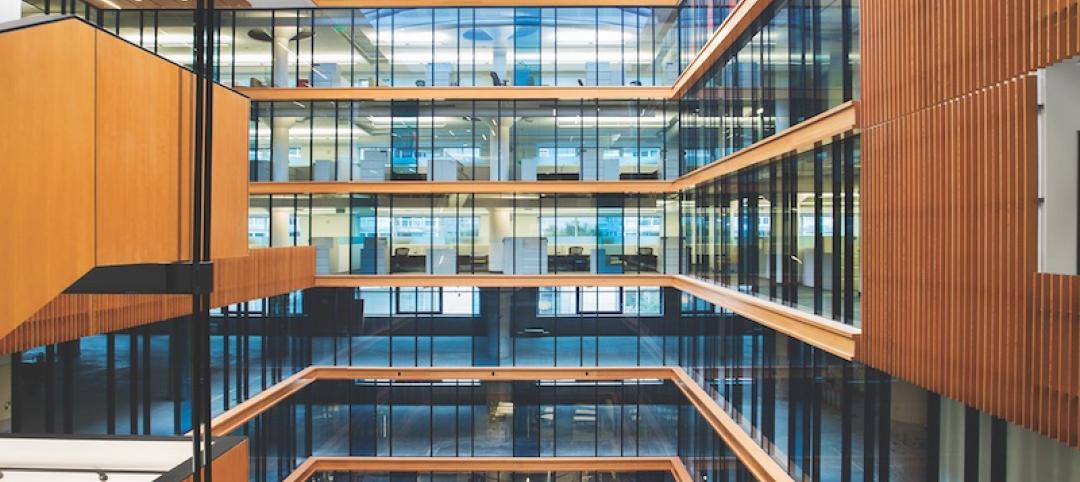The nearly four-year restoration of the David H. Koch Hall of Fossils and installation of the new Deep Time exhibit at the Smithsonian National Museum of Natural History—from building design and construction, to specimen conservation and installation, to exhibit design and fabrication, and finally to commissioning—took place even as the 1910 Beaux Arts gallery remained open to eight million annual visitors.
The project team, led by design firm EwingCole, uncovered and restored the magnificent skylight above the hall. The designers used a glazing system based on aerogel nanotechnology to act as insulator and filter against UV light and heat, bringing daylight into the gallery for the first time in two decades and protecting the 65-million-year-old specimens below.
The hall’s ornate plasterwork, which had been lost for generations, was recreated by skilled craft workers using ancient methods. Templates for the new moldings were cast from original building fabric in a sibling gallery, Sant Ocean Hall.
The new enclosed FossiLab gives visitors a glimpse into the exacting work of Smithsonian scientists and preservationists, while mitigating high levels of noise and dust pollution from adjacent galleries.
HONORABLE MENTION
BUILDING TEAM EwingCole (submitting firm, architect, SE, MEP) Smithsonian Institution—Smithsonian Facilities/Office of Planning, Design and Construction (owner) Reich + Petch (exhibit designer) Grunley Construction (GC) DETAILS 32,000 sf Total cost $125 million Construction time August 2015 to June 2019 Delivery method Design-bid-build
Related Stories
Reconstruction Awards | Nov 16, 2016
BD+C's 2016 Reconstruction Award Winners
St. Patrick’s Cathedral, Lovejoy Wharf, and the Bay Area Metro Center are just a few of the projects recognized as 2016 Reconstruction Award winners.
Reconstruction Awards | Nov 16, 2016
Reconstruction Awards: The Renwick Gallery of The Smithsonian American Art Museum
The renovation restored two long-concealed vaulted ceilings in the second-floor galleries and recreated the original 19th-century window configuration.
Reconstruction Awards | Nov 16, 2016
Reconstruction Awards: Massachusetts Maritime Academy
The two-story “overbuild” employed block and plank construction with drag strut detailing to connect it to the existing building.
Reconstruction Awards | Nov 16, 2016
Reconstruction Awards: The Masonic Temple
The building team suspended a new eighth-floor mezzanine and added 18 9x15-foot windows to the north, south, and west façades.
Reconstruction Awards | Nov 16, 2016
Reconstruction Awards: San Francisco War Memorial Veterans Building
The building team used a system of rocking concrete shear walls, which eliminated the need for deep foundations and reduced the shear force on each wall.
Reconstruction Awards | Nov 16, 2016
Reconstruction Awards: Arc at Old Colony
The Arc at Old Colony's vintage floor plans, voluminous lobby, and myriad elevators were perfect for redevelopment as a historically charming residential building.
Reconstruction Awards | Nov 16, 2016
Reconstruction Awards: Noble Chapel
In May 2013 the 124-year-old Noble Chapel, suffered a three-alarm fire that almost completely destroyed its 1937 crematorium.
Reconstruction Awards | Nov 16, 2016
Reconstruction Awards: Bay Area Metro Center
The structure’s 60,000-sf floor plates made the interior dark and foreboding, and BAHA wanted to improve working conditions for its employees and tenants.


